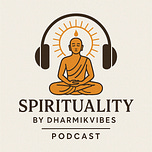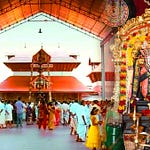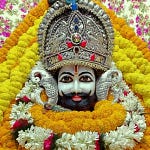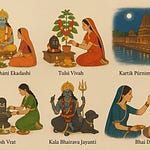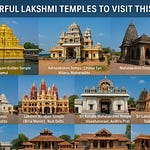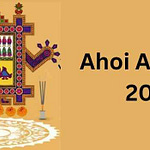The Jagannath Rath Yatra, also known as the Shree Gundicha Yatra or Chariot Festival, is one of the most spectacular, oldest, and holiest Hindu festivals in India. Rooted deeply in mythology, scripture, and cultural tradition, the annual event takes place in Puri, Odisha, and draws millions of devotees from around the world. In 2025, this sacred yatra will be celebrated with immense grandeur on Friday, June 27, coinciding with the Dwitiya Tithi (second day) of Shukla Paksha in the Ashadha month of the Hindu calendar.
This article provides an in-depth view of the Jagannath Rath Yatra 2025, covering its historical roots, detailed rituals, spiritual symbolism, architectural marvels, festival timeline, cultural performances, and the global significance it has garnered.
Historical Origins & Mythological Legacy
Vedic & Puranic References
The festival’s antiquity can be traced back to Vedic and Puranic texts, including the Skanda Purana, Brahma Purana, and Padma Purana. These texts describe the divine journey of Lord Jagannath (a form of Vishnu/Krishna) along with his siblings, Lord Balabhadra and Devi Subhadra, to their maternal aunt’s residence—symbolizing compassion, outreach, and divine leela.
King Indradyumna & Temple Genesis
According to tradition, the first Jagannath temple was established by King Indradyumna in the Satya Yuga, who had divine visions of the deity and constructed the shrine following divine guidance. The current structure in Puri was built in the 12th century by King Anantavarman Chodaganga Deva of the Eastern Ganga dynasty.
Cultural Evolution
The yatra gained prominence during the reign of the Gajapati rulers, who institutionalized rituals and architecture. With time, the Rath Yatra became not just a local tradition but a pan-Indian celebration of Lord Jagannath as a universal deity who transcends caste, creed, and boundaries.
Significance of the Rath Yatra
Symbolism of the Journey
The annual journey from the Jagannath Temple to the Gundicha Temple is said to represent:
· The outreach of divinity to commoners, especially those barred from temple entry.
· A reenactment of Krishna’s departure from Dwarka to Vrindavan.
· The cycle of life, death, and rebirth through the return journey (Bahuda).
Inclusion and Equality
Unlike temple darshan that may have limitations based on religious norms, the Rath Yatra allows everyone—irrespective of religion, gender, or status—to touch and pull the chariots, symbolizing universal brotherhood.
Chariot as Sandhini Shakti
As per scriptures, the chariot (Ratha) is considered to be infused with Sandhini Shakti—the eternal energy that connects God and devotees. Merely touching the chariot is said to absolve sins and offer moksha (liberation).
Rath Yatra 2025 Calendar of Events
The sacred observances of the Jagannath Rath Yatra 2025 begin with Anavasara, the period during which the deities rest away from public view, starting on June 13, 2025. This is followed by Gundicha Marjana on June 26, 2025, the ritual cleaning of the Gundicha Temple to prepare for the arrival of Lord Jagannath and his siblings.
The main event, the grand Rath Yatra, will take place on Friday, June 27, 2025, when the deities are ceremoniously taken on chariots from the Jagannath Temple to the Gundicha Temple.
Subsequently, Hera Panchami will be observed on July 1, 2025, a unique ritual involving Goddess Lakshmi expressing her displeasure for being left behind.
The Bahuda Yatra, or the return journey of the deities to the main temple, will take place on July 4, 2025.
On the following day, July 5, 2025, two significant events will be observed: Suna Besha, when the deities are adorned with gold ornaments, and Niladri Bijay, marking their return to the sanctum sanctorum of the Jagannath Temple.
The auspicious Dwitiya Tithi, which governs the timing of the main Rath Yatra procession, will begin at 1:24 PM on June 26 and end at 11:19 AM on June 27, 2025.
The Chariots: Engineering of the Divine Vehicles
Each year, three new majestic chariots are meticulously constructed for the deities—Lord Jagannath, Lord Balabhadra, and Devi Subhadra—using traditional techniques passed down through generations of hereditary carpenters. The construction begins on the sacred day of Akshaya Tritiya, during the month of Vaisakha, and involves intricate craftsmanship, spiritual rituals, and community participation.
The chariot of Lord Jagannath is named Nandighosha. It is the largest among the three, featuring 16 massive wheels and reaching a towering height of 44 feet 2 inches. It is constructed using 832 specially selected wooden logs. The canopy of this chariot is decorated in red and yellow, representing divine energy and Vishnu’s symbolism. The horses drawing the Nandighosha are white in color, signifying purity, and the charioteer entrusted with guiding this sacred vehicle is Daruka. Garuda, the mighty eagle and vahana of Lord Vishnu, is regarded as the guardian deity of the chariot.
The chariot of Lord Balabhadra is known as Taladhwaja. Slightly smaller, it features 14 wheels and stands at a height of 43 feet 3 inches. It is built from 763 wooden logs, with a canopy colored in red and bluish green, symbolizing valor and agricultural bounty. The horses that pull Taladhwaja are black, embodying strength and determination. The divine charioteer assigned to this chariot is Matali, and the guardian deity is Vasudeva.
The chariot of Devi Subhadra is called Darpadalana, meaning the crusher of pride. This chariot has 12 wheels and a height of 42 feet 3 inches, constructed from 593 wooden logs. It is adorned with a red and black canopy, with black signifying Shakti or feminine divine energy. The horses guiding this chariot are red, reflecting dynamic energy and protection. The charioteer is Arjuna, the famed warrior prince from the Mahabharata, and the guardian deity of this chariot is Jayadurga, a fierce form of the Goddess.
Each chariot is an architectural and spiritual masterpiece, rich in symbolism and crafted with devotion, reflecting the grandeur and sacredness of the Jagannath tradition.
Ritual Accessories
· Chariot Ropes: Made from coconut fibers, named Sankhachuda Nagini, Basuki Naga, and Swarnachuda Nagini.
· Flag Names: Trailokyamohini, Unnani, Nadambika
· Canopy Colors: Red-Yellow (Jagannath), Red-Green (Balabhadra), Red-Black (Subhadra)
Rituals and Customs of the Rath Yatra
1. Snana Yatra
Held on Jyeshtha Purnima, this bathing ritual uses 108 pots of aromatic water to cleanse the deities. Post this, they enter Anavasara, a 15-day period of recovery, during which public darshan is restricted.
2. Gundicha Marjana
A day before the Yatra, devotees clean the Gundicha Temple to welcome Lord Jagannath, symbolic of purifying the soul to receive divine blessings.
3. Chhera Pahanra
Performed by the Gajapati King of Puri, who sweeps the chariots with a golden broom—an act of royal humility before the Lord.
4. Pahandi Bije
This is the grand ceremonial procession where the deities are moved from the sanctum to the chariots amid kirtans, chants, and blowing of conch shells.
5. Hera Panchami
Celebrated on the fifth day, this ritual marks Goddess Lakshmi's symbolic protest for being left behind. She visits the Gundicha Temple and damages the chariot in a playful gesture before secretly returning.
6. Bahuda Yatra
The return journey from Gundicha Temple to the Jagannath Temple marks the completion of the pilgrimage cycle.
7. Suna Besha
On this day, deities are adorned with gold ornaments weighing over 208 kg. Initiated by King Kapilendra Deva in 1460 after returning victorious from war.
8. Niladri Bijay
The final day when the deities re-enter the sanctum. Lord Jagannath placates Goddess Lakshmi with a garland, signaling reconciliation.
Banati Art and Dahuka Gita
Banati Performance
A traditional performance involving spinning fireballs and knives. It is considered a display of valor and spiritual devotion.
Dahuka Gita
Dahukas chant bold, fertility-inspired verses (Dahuka boli) that energize the crowd. Without these chants, the chariots do not move, as per custom.
The Role of Sevayats (Servitors)
There are over 36 categories of sevayats, each with a defined role:
· Suara & Mahasuara: Responsible for cooking Mahaprasad.
· Daitapati Sevaks: Handle deity movement.
· Pushpalaka Sevaks: Offer flowers and dress the deities.
These hereditary roles are passed down through generations, and their knowledge is preserved through oral and practical tradition.
Jagannath Temple: Spiritual and Architectural Glory
· Constructed: 12th century
· Style: Kalinga architecture
· Height: 214 feet
· Speciality: Home to the Nilachakra (blue wheel) and Patita Pavana image for non-Hindus
· Deities: Made of Neem wood, uniquely repainted every 12 to 19 years (Nabakalebara)
ISKCON and Global Celebrations
The Rath Yatra is celebrated in over 108 countries, thanks to the efforts of ISKCON (International Society for Krishna Consciousness).
ISKCON Rath Yatra 2025 (Prayagraj)
· Date: June 29, 2025 (Sunday)
· Route: Hira Halwai → Subhash Chauraha → Hanuman Mandir → KP Ground
· Special Note: Scheduled on Sunday to allow greater public participation
Global processions are held in New York, London, Durban, Singapore, Edinburgh, and more, showcasing India’s soft spiritual power.
Economic, Social, and Logistical Impact
· Footfall: ~1.2 million in Puri (2024 estimate)
· Economic Boost: ₹100+ crore to local economy
· Security Personnel Deployed: 15,000+
· Mahaprasad Consumption: Over 5 lakh people daily
· Live Broadcast: By Doordarshan, Jagannath TV, and international channels
Travel Guide for Pilgrims
· By Air: Biju Patnaik Airport, Bhubaneswar (60 km)
· By Rail: Puri Junction (well-connected)
· Stay: Dharma Shalas, hotels, temple guest houses
· Food: Mahaprasad is available at Ananda Bazaar (within temple complex)
The Jagannath Rath Yatra 2025 will be an event of epic spiritual, cultural, and emotional magnitude. It is a sacred time when the divine comes to the people. Devotees, travelers, and spiritual seekers from across the globe gather to pull the chariots, chant the Lord's name, and become part of a centuries-old tradition that unites millions in devotion and love.
So mark your calendars: June 27, 2025. Let the rhythmic beats of drums, the chants of "Jai Jagannath," and the sight of massive wooden chariots rolling across the Grand Avenue of Puri fill your soul with timeless divinity.
Jai Jagannath!

